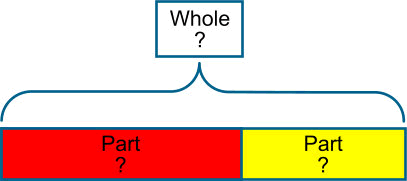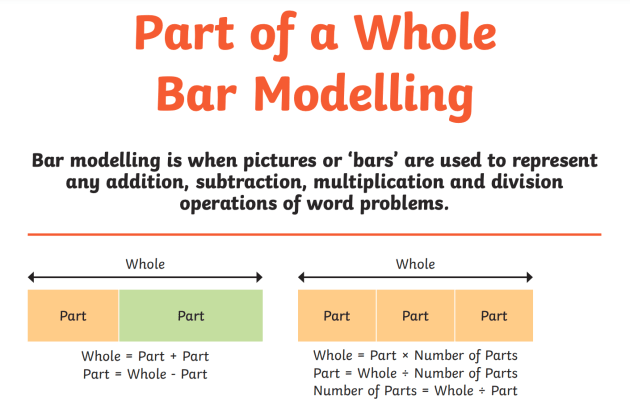The power of bar model drawing techniques in visualizing math relationships
Exploring Bar Model Drawing Techniques: A Comprehensive Overview to Envisioning Mathematics Concepts
Bar version attracting strategies work as an important source for both educators and trainees in visualizing mathematical ideas. These models simplify intricate mathematical relationships, assisting in the comprehension of addition, subtraction, division, and multiplication. This overview outlines reliable techniques for implementing bar versions, fostering active involvement and real-world connections. As readers discover the sensible applications and mentor suggestions, they will discover just how these methods can transform their technique to mathematics.
Comprehending the Essentials of Bar Model Illustration
Bar model drawing functions as an effective aesthetic tool in maths, assisting in the understanding of mathematical relationships and analytical approaches. This strategy involves representing numbers and their relationships with rectangular bars, making it easier to imagine procedures such as addition, multiplication, subtraction, and department. Each bar's length matches to a particular worth, permitting students to contrast quantities and understand percentages clearly.
To create a bar version, one begins by determining the problem's crucial elements, frequently breaking it down into components that can be visually stood for. In an easy addition trouble, two bars can be attracted, with their sizes standing for the addends. The mixed size illustrates the amount. Furthermore, bar designs can be adjusted for extra complex problems, including portions and ratios, by changing benches accordingly. Mastering these essentials lays a strong foundation for effective problem-solving and deeper mathematical understanding.
Benefits of Utilizing Bar Designs in Math
Using bar models in maths provides countless benefits that boost knowing and comprehension. These graphes help trainees in realizing complicated concepts by breaking them down into manageable parts. Bar models give a clear structure for showing connections in between numbers, making abstract concepts extra concrete. They promote a deeper understanding of mathematical operations and assist in analytical by permitting learners to envision the data they are working with.
Bar designs sustain the advancement of important assuming skills, as trainees should examine and translate the aesthetic details to attract final thoughts. This method motivates energetic interaction with the product, reinforcing retention and mastery of mathematical principles. By promoting a solid structure in aesthetic literacy, bar designs empower students to come close to numerous mathematical challenges with self-confidence. In general, the combination of bar models into maths education shows beneficial in growing both understanding and analytical capacities among pupils.
Using Bar Designs to Enhancement and Reduction
Bar versions act as an effective device for visually representing addition and reduction troubles. By highlighting the relationship between numbers, they enhance understanding and facilitate problem-solving. Additionally, real-life applications of these models can assist students realize mathematical concepts in practical contexts.
Representing Enhancement Visually
When trainees encounter enhancement and subtraction troubles, visual help can substantially enhance their understanding of these operations. Bar versions function as efficient tools for standing for enhancement. By splitting a rectangular shape right into sections that represent the numbers entailed, students can picture the partnership in between the amounts. For circumstances, if a pupil requires to include 3 and 5, they can produce a bar split right into 2 sections: one section representing 3 and the other representing 5. This clear depiction not just simplifies the enhancement procedure yet also enhances the idea of incorporating quantities. As trainees control these aesthetic help, they establish a much deeper understanding of addition, leading to enhanced problem-solving abilities and higher self-confidence in their mathematical capabilities.
Reduction With Bar Models
Although reduction is often regarded as a more intricate procedure than enhancement, bar versions can successfully clarify this procedure for trainees. By aesthetically standing for the quantities entailed, students can much better understand just how numbers associate with each other. In a bar design for reduction, one bar represents the overall, while one more indicates the quantity being subtracted. This aesthetic distinction assists trainees realize the principle of "removing." If a bar shows 10 systems, and one more bar representing 4 systems is eliminated, pupils can conveniently see that 6 devices continue to be. This method not only cultivates understanding of subtraction but likewise help in creating analytical skills, enabling trainees to imagine their mathematical reasoning and enhance their general understanding of mathematical concepts.
Real-Life Application Instances
Comprehending reduction via bar designs lays a foundation for using these methods in real-life circumstances. In different contexts, such as budgeting or buying, people can envision just how much cash continues to be after expenses. If an individual has $50 and spends $20, a bar version can represent the overall amount and the spent portion, showing that $30 is left. Furthermore, moms and dads can use bar models to help kids understand just how many more items need to be contributed to finish a collection, such as having 3 apples and requiring five. This aesthetic depiction streamlines intricate troubles, assisting in understanding and retention. Inevitably, bar designs work as effective devices in daily decision-making, boosting mathematical understanding in sensible scenarios.
Imagining Multiplication and Division With Bar Designs
In exploring the application of bar models for reproduction and department, it is important to understand their foundational ideas. Creating multiplication versions enables learners to picture relationships between numbers, while effective department methods can be highlighted through these aesthetic aids. This approach improves understanding and problem-solving abilities in maths.
Understanding Bar Designs
Bar versions act as an effective aesthetic tool for showing the principles of reproduction and division. They make it possible for learners to represent mathematical connections in a structured format, promoting a deeper understanding of these procedures. In multiplication, bar versions show groups of equal dimension, enabling people to visualize the total amount when incorporating these teams. Alternatively, in division, bar designs assist depict exactly how an overall is separated into smaller sized, equivalent components, clearing up the principle of partitioning. By using these visual help, pupils can understand the underlying concepts of multiplication and division better. This method not only enhances comprehension yet likewise supports problem-solving abilities, making bar versions an invaluable possession in mathematical education and learning.
Constructing Multiplication Versions
Building multiplication versions utilizing bar representations offers a clear technique for visualizing the procedure of reproduction. These models make it possible for learners to represent reproduction as groups of equivalent components, making abstract concepts a lot more concrete. To illustrate (3 times 4), a pupil can attract one bar divided right into 3 equivalent segments, each standing for 4 devices. In addition, creating a 2nd bar with the same length reinforces the understanding of duplicated addition, as each segment represents one group. This graph not only help in realizing multiplication but additionally improves analytical abilities. By employing bar versions, trainees can better comprehend relationships between numbers and create a robust foundation for more complex mathematical principles, resulting in enhanced self-confidence in their capabilities.
Picturing Division Techniques

Fixing Word Issues Utilizing Bar Model Techniques

For instance, in a problem entailing enhancement and reduction, students can draw different bars for each and every quantity and after that manipulate them to find the service. This process not just clarifies the trouble however likewise fosters a deeper conceptual understanding. Additionally, bar designs can be adapted for numerous kinds of word problems, making them functional across various mathematical subjects. Inevitably, making use of bar models can considerably improve pupils' analytic skills by offering a clear aesthetic pathway to show up at the correct answer.
Integrating Bar Versions in Different Mathematics Topics
Bar models can be effortlessly integrated right into different mathematics topics, boosting pupils' understanding of principles past fundamental math. In algebra, these visual devices help in representing inequalities and formulas, allowing students to visualize partnerships between variables. When dealing with geometry, bar versions can highlight the residential properties of shapes and spatial reasoning, helping pupils realize ideas like location and border properly. In statistics, bar designs help with the interpretation of data sets, enabling trainees to compare quantities and recognize fads aesthetically. In addition, integrating bar versions within dimension subjects aids in understanding units and conversions by providing a concrete depiction of amounts. By using bar designs across various mathematical areas, instructors can cultivate a much deeper understanding of complicated concepts, thereby boosting problem-solving abilities and promoting essential thinking (bar model drawing techniques). This versatility demonstrates the energy of bar models as a foundational device for pupils in their mathematical trip
Tips for Training Bar Designs Properly
Integrating bar designs into mentor techniques needs thoughtful approaches to optimize their efficiency. Educators should start by introducing bar designs with basic, relatable examples that trainees can easily grasp. This helps to construct confidence and familiarity with the principle. Gradually boosting the intricacy of problems allows learners to use their abilities gradually. In addition, teachers need to urge students to create their very own bar models, advertising active involvement and ownership of their learning.
Integrating joint activities can likewise improve understanding, as trainees discuss and fix problems in groups. Continual comments is crucial; educators should offer positive discourse on students' bar model representations to direct enhancement. Attaching bar models to real-life scenarios enhances their importance, assisting trainees see the practical applications of their mathematical abilities. By carrying out these methods, teachers can efficiently harness the power of bar models in their maths instruction.
Regularly Asked Questions
Can Disallow Versions Be Utilized in Other Subjects Besides Math?
Bar models can without a doubt be made use of in numerous topics beyond mathematics. They properly illustrate principles in scientific research, social studies, and language arts, helping to visually stand for connections, procedures, and ideas for enhanced understanding across self-controls.
What Age Group Is Finest Fit for Discovering Bar Models?
Bar models are best click here fit for youngsters ages 7 to 12, as they establish concrete thinking skills during this duration (bar model drawing techniques). At this age, pupils can properly realize abstract principles via graph and analytical methods
Are There Digital Tools for Creating Bar Versions?

How Can I Evaluate Trainee Understanding of Bar Versions?
Assessing pupil understanding of bar versions can entail quizzes, observational analyses, and seminar. Educators may likewise assess trainees' finished models and their capability to discuss their reasoning, ensuring a detailed evaluation of comprehension.
What Prevail Blunders When Utilizing Bar Models?
Usual mistakes when using bar versions include misstating amounts, falling short to precisely label bars, confusing enhancement and reduction, neglecting to use constant scales, and overlooking the importance of clear visual separation between various components.
In addition, bar versions can be adjusted for extra complex troubles, consisting of portions and proportions, by changing the bars as necessary. Subtraction is usually viewed as an extra complicated procedure than addition, bar models can effectively clarify this procedure for pupils. In a bar design for subtraction, one bar stands for the total, while another indicates the quantity being subtracted. If a bar shows 10 systems, and one more bar standing for 4 systems is removed, trainees can quickly see that 6 units stay. When dividing an overall into equal teams, trainees can attract a lengthy bar to stand for the entire and then sector it right into smaller sized bars that indicate each team.